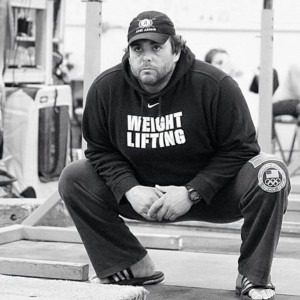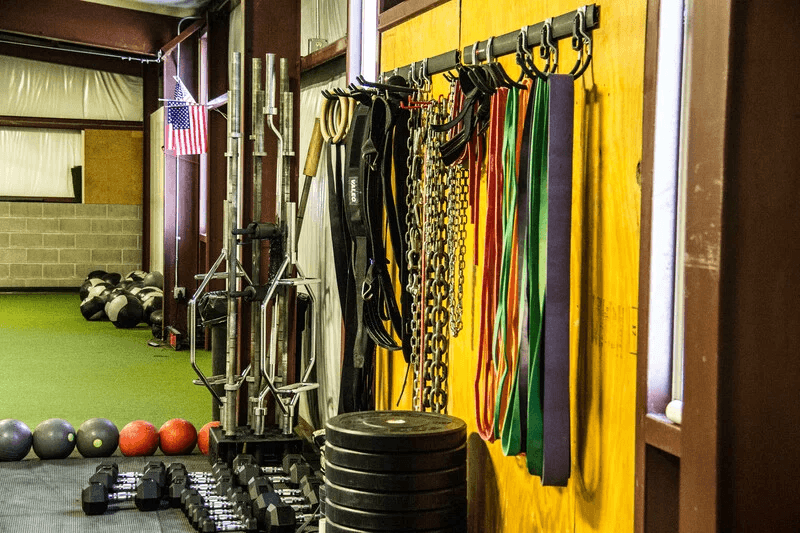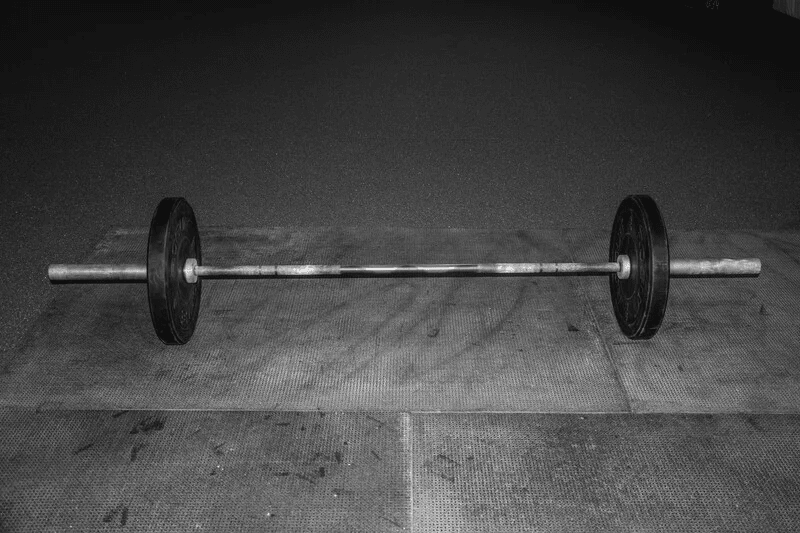Be Your Best (Part 1): Daily Steps For Being the Best Coach, Small Business Owner, and Human Being
Coach Development | MindsetABOUT THE AUTHOR

Sean Waxman
Sean is the head coach and owner of Waxman’s Gym. He’s been a professional coach for nearly 25 years, a national-level competitive weightlifter, and a graduate-level student of kinesiology and biomechanics. Since opening Waxman’s Gym in 2010, Sean has developed two top-ten finishers at the World Championships, a World University Championship Silver medalist, a Pan Am Championship Silver medalist, and two Pan Am Championship team members. In addition, Sean has developed more than two dozen national-level weightlifters with three National Champions and seven national medalists. Moreover, Sean’s lifters have produced four American records, nine international medals, and nearly two-dozen national medals. Sean has also worked with CrossFitters of all levels including Regionals and Games athletes. When not developing competitive weightlifters and CrossFitters, Sean works with athletes of all skill levels from a wide range of sports to help them develop great skill, strength and power. Sean also has a great passion for helping other coaches learn to teach/coach weightlifting. Sean is currently a Director on the Board of USA Weightlifting, a USA Weightlifting Lead Instructor for Coaching Education, and the former President of the Southern California chapter of USA Weightlifting.
Told to Phil White | Over the next few months, we’re going to explore what it means for coaches to be their best and get the most from their athletes. For this first installment, I reached out to Sean Waxman, founder of Waxman’s Gym and a USA Weightlifting master level coach.
// Theory + Practice
My coaching journey began many years ago. As a kid, I knew from an early age that I wanted to be in the business of helping others maximize their potential. Initially, I thought this would mean becoming a football coach. But even though strength and conditioning was not a profession back then, this is the direction I eventually found myself moving in.
That’s not to say that I didn’t ever think about a different path. In college, I started out as a biology major and was planning to go to med school. I took the MCATs and did well, but at the last moment pivoted in another direction, changing my major to physical education and resolving to become a weightlifting coach after I graduated.
Once I had settled on this goal, I began to work backwards to figure out the skills and knowledge I’d need to excel. If you’re going to be a botanist, you’d better learn everything you can about flora and fauna. So my first order of business was to grasp how the human body works so I could enable people to get the best from themselves physically.
If I were going to help people get into a better state, I needed to know how certain workouts and programs would impact them on a physiological and psychological level.
// Developing Deep Understanding
Next up was gaining a kinesthetic sense of what was involved in each of the movements I was preparing myself to teach. I realized that I could amass all the theoretical knowledge in the world, but if I didn’t truly know how to move well and what that felt like, then how could I demonstrate and explain it to others so that it could be understood and applied well? So I got deep into the art and science of both performing and coaching the actual movements to gain a more visceral appreciation.

Some of my early mentors described the snatch and clean and jerk as tools that could be used to promote change in the body, and like a master craftsman, I wanted to become proficient in utilizing these.
Doing so made me start to grasp that the learning process is two-fold. Yes, you have to be continually exposing yourself to new concepts. But when you add to your skillset, it also empowers you to look at what you learned previously through a new, fresh set of eyes and take more from it that you can apply to yourself and your athletes.
My approach to continual learning has necessitated total immersion for a very long period of time, and looking at things through a critical yet curious lens. This long apprenticeship I’ve served in coaching and my continual quest for knowledge has not brought me to an end point, but rather served as the fertilizer helping me grow into the coach I am today, and the better one I’m determined to be tomorrow.
// The Power of Why
A program is a roadmap that can help an athlete get to a desired destination. If you’ve designed your plan carefully and with a certain depth of knowledge and experience, you should be able to look at any aspect, ask yourself “why?,” and provide a satisfactory answer.
It could be as simple as a one-off question, such as “Why is this exercise on this day?” Or the first “why?” could be just the first of several that forces you to go on a logical progression, check your assumptions, and, when necessary, make adjustments.
The whys can be hard and fast, or they can be contextual and depend on the situation, the athlete in question, their goals and injury history, the balance between stressors and recovery, and so on. The further you can go down the rabbit hole, the greater your degree of mastery. That said, you never truly become a master, but are always trying to hone your craft and seek ways to improve.
// Take Your Duty Seriously

Never think or say to someone, “I’m just a coach.” There’s no “just” about it because this isn’t only about you. As a developer of human beings, you have the chance to profoundly impact the performance and harness the potential of everyone who comes to you. So you need to be dedicated to your craft and take it seriously because your clients are literally putting their lives in your hands.
You inevitably form a bond with your athletes, and they begin to put their trust in you. That creates a hefty responsibility for you to bear in how you go about your business. This shouldn’t crush you under its weight, but rather keep you aware of your duty to do no harm and also be the best guide you can be, so they can get the results they seek.
If you aren’t giving your all, they will never unleash everything they’re capable of doing.
If a kid comes to you as a wide-eyed, athletically gifted 16-year-old and you coach them until they’re 26, they’ve given you a whole decade of their career. Hopefully, you’ve served and instructed them faithfully throughout the process. Otherwise, those 10 years have gone down the drain, never to be recovered.
If this athlete continues to show up consistently, do the work, and invest in recovery and yet continues to make big mistakes in competition, that’s not on them, but on you. If you mess up an athlete for even two or three years, you are creating an artificial ceiling for their potential that they’re probably never going to break through, even if they move on to another coach.
So keep this in mind and commit to being the best coach you can be, for the good of your own career, your fellow coaches, and, most of all, your athletes.
It’s important that you never make a promise to a client that you can’t keep and that you never exaggerate your level of expertise. If someone comes to you with a specific need that you know in your heart of hearts you cannot meet, you shouldn’t bullshit them. Instead, the only two options are to go to someone in your network who can advise you (I act in this advisory capacity for multiple other coaches) or let the person know that while you want to help them, they’d be better off going to see this other professional who will be a better fit for what they want.
Don’t be afraid to admit when you don’t know something. Ego has no place in coaching because the stakes are too great.
// Balancing the Business Side
Over the past 11 years, one of the main things that has helped me grow and sustain my business was an epiphany that I cannot do everything. At the outset I had no choice because I didn’t have enough money coming in to pay other people to do things. But as time went on and the gym started getting more memberships, I came to realize that I could either be mediocre at both business and coaching or choose to focus on one and get some help for the other.
This choice was the very definition of a no-brainer – I was all-in on the coaching side because I’m better at it and enjoy it more. So I found some people to pitch in on the day-to-day operations to free up my time and energy.

Once I was no longer working 16-hour days in a vain attempt to handle everything, I was able to turn my attention to what was working and what wasn’t on the coaching floor.
We used to allocate a lot of resources to team training, in which our competitive athletes would come in as a big group and work with me and my other coaches. While I loved certain things about this – chiefly the comradery it promoted – there were also some pitfalls. One was that whether we meant to or not, we always ended up focusing most of our attention on the best athletes who had the chance to podium, particularly as the next meet got closer and closer. This meant the others were falling through the cracks, which was doing them a disservice.
To fix the issue, I let my assistant coach go and stopped doing team training every day. Instead, we started inviting everyone to come and train together on Saturdays. These sessions don’t involve a lot of one-on-one coaching, unless we notice that something is going awry. Instead, people go heavy in a competitive way. They’re not always maxing out, but they’re slinging some serious weight.
It’s a great time for our lifters to test themselves. And it improves community because rather than the environment going stale as I fear it was back when we were doing the team sessions more often, people look forward to seeing each other on the weekend and catching up.
The change has been great for me and them.
// Constructing a Productive Environment Around Priorities
Over the years I probably haven’t consistently set aside enough time for introspection, but I know that I do my best cognitive work first thing in the morning. So I’m always up early. First, I make time to read. Then I head to the gym. It’s open a bit later – 9 am instead of 7 am – on Mondays, Wednesdays, and Fridays, so I have two and a half or three hours to finish any work that involves programming or problem-solving before anyone else arrives.
Then in the middle of the day I block off an hour so that I can lift without other distractions intruding.
The other end of the day is just as crucial. Until about two years ago, I had zero work/life boundaries. I worked in lieu of training, eating, and sleeping. It was fine for a while, but I started seeing signs that I was losing creativity and letting my business completely define who I was as a person.
So now when I close the doors at 9 pm, it’s a reminder that I’m done for the day. I go to a spa several days a week and some of my best ideas come to me while I’m soaking in hot water or sitting in the sauna. And rather than trying to get away with four or five hours of sleep a night, I’ve started protecting that part of my day, too, so that I now consistently log seven or eight hours.

I’ve put my life together in such a way that the two things most important to me – my health and longevity – are prioritized daily. As a result, I’m happy, strong, and relatively stress-free – or at least as much as you can be when running your own business.
I’ll turn 50 soon, and hope that by dedicating time and energy to the things that are essential and cutting out those that aren’t, I’ve created a sustainable way of living that will keep me going for the next 50 years. I’m going to take my time, get to where I want to go, and have a solid plan to thrive when I get there.
Are you a better coach after reading this?
More coaches and athletes than ever are reading the TrainHeroic blog, and it’s our mission to support them with usefull training & coaching content. If you found this article useful, please take a moment to share it on social media, engage with the author, and link to this article on your own blog or any forums you post on.
Be Your Best,
TrainHeroic Content Team
HEROIC SOCIAL
HEROIC SOCIAL
TRAINING LAB
Access the latest articles, reviews, and case studies from the top strength and conditioning minds in the TH Training Lab

